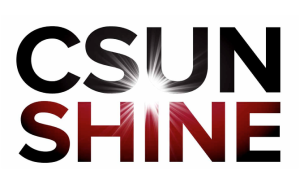Oh higher education, you are so complex…
LA Weekly recently posted a piece about CSUN’s plan to reduce the population of incoming undergrad students – current population over 40,000 in fall 2015 (up from 35,198 in fall 2009) – by 300 students a year for the next four years (here, 2/17/15).
Here are some other key points:
CSUN opened in 1958 and enrolled 2,525 students that fall.
The price of full-time admission in 1958 was $29 per semester, or $237.56 in today’s dollars. Today, it’s $3,272.
Representatives from CSUN say the campus is impacted and at saturation.
CSUN will only allow transfer students from 17 regional community colleges. Those from other two-year institutions will be admitted on the basis of different (read: higher) criteria.
Would-be freshmen from areas around LA with a closer Cal State would be eliminated from CSUN’s preferred local admissions criteria – in other words, kids from East LA or from Ventura county, for example, would no longer get an admissions bump at CSUN because there are Cal State campuses closer to them (Cal State LA and Cal State Channel Islands, respectively). Presumably, said students would get a “locals” bump at their local campus.
The LA Weekly piece ends with the following statement: “The mission of the California State University system is to ‘encourage and provide access to an excellent education to all who are prepared for and wish to participate in collegiate study.’ If you disagree with CSUN’s plan, you can weigh in. Public hearings begin March 5. Info.”
But what happens if you agree with it? Because as a born-and-raised LA person, there’s something traffic-wise to be said about adjusting the “locals” enrollment thing (Cal States are distributed widely across the state and throughout the LA basin – here); and as a person who professed at CSUN for two years (’03 and ’13), I gotta say: 300 students a year maybe isn’t enough.
Higher education – specifically, access to higher education – is extremely complex. I have no idea how administrators consider factors such as local admissions preferences, nor do I have any idea how they came up with the number 300 times four years. All I know is what I know from my direct experience. So, for example, this:
In the Fall of 2013, I was teaching three sociology courses at CSUN – two huge classes with enrollments over 100 and one upper-level 2,000 word “writing component” class with a cap of 65.
Generally, a writing component is satisfied in the form of one big paper; however, my 10+ years of teaching experience does not allow for such an approach. There’s no room for improving, thus my students’ 2,000 words came in the form of four 500 word essays. Logistically, however, this approach unreasonable, both for the students and for the professor.
Though totally via my own design, I was faced with roughly 240 essays to grade, in addition to two exams and everything else required to teach the course (and in addition to two more courses… It’s also worth noting that, because many universities today are heavily reliant upon part-timers, most professors teach even more than that!). This is an almost impossible amount of grading for one person, and there’s no way to complete it within a reasonable amount of time while also actually supporting students in their writing processes.
Some schools have TAs to support professors, dividing up grading in *MEGA* classes to such a degree that one might focus on the content of the work during assessment (vs just banging out grading). Not CSUN.
Some schools have smaller classes, at least for courses including skills components like writing, which makes it more realistic for one person to handle. Not CSUN.
CSUN, like most other universities, has a writing lab. Students either 1) reported impossibilities with accessing a tutor or 2) came back worse off after having gone (they brought receipts)…
These few thoughts on this one example is just the tip of the iceberg. There’s so very much more, all of which is so very overwhelming. Smaller classes may help professors actually do their jobs, but at the same time 1,200 reductions over four years is basically an insignificant amount. Perhaps this initiative is intended as an experiment, the first step in a snowball of reform? Maybe it’s on the right track, or maybe it’s off-mark? I don’t know, but I do know this: The current state of things is absolutely wrong. There’s something downright underhanded about pitching a service (education), collecting fees (that many struggle to pay for the duration of their lives), and providing an inferior product, a product that a user can’t access, and/or a product that is essentially useless.
Put simply – students are getting scammed, and professors are being exploited.
People often ask me why I left academia. Being complicit within a system that’s been corrupted to such a degree is just one reason out of at least 300.
(pictured: I love CSUN. The university is engaged here simply as an example I’m familiar with – not as an exception, but as a rule)
* * *
Got a sociology question? Need some social justice informed life advice? Contact Dr. Chauntelle right here.
